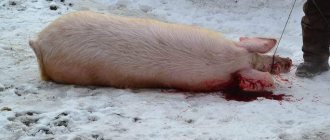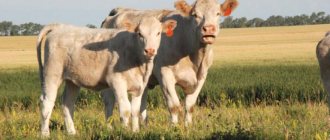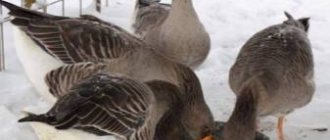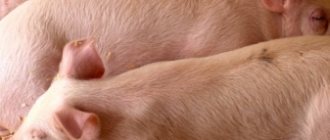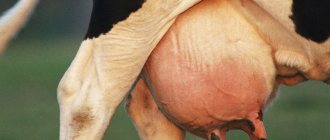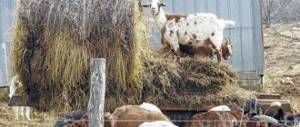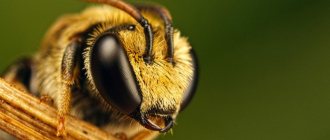When to slaughter a boar - how long after castration can slaughter be carried out?
Rural residents consider the presence of pigs on the farm to be a sign of prosperity - this is a correct opinion. Typically, farmers grow two or three heads so that they have enough to feed their family. But time passes, I want to increase production volumes in order to make a profit. Then the villagers think about reproducing the livestock. Which type of insemination to choose - artificial or natural? The first is costly and sometimes ineffective. The second is the question: up to what age should a boar be used, how long after castration can it be cut so that the meat does not lose its taste and quality?
Briefly about the main thing
You have decided to use the natural method of raising pigs on your farm - all the pros and cons have been weighed, the intention is clearly defined. Particular attention should be paid to the choice of manufacturer, maintenance features, and slaughter.
How to choose the right breeding boar
Decide for yourself what the offspring should be - hybrid or purebred. There are advantages in both cases.
When examining a small or young boar, focus on the indicators of its parents, external signs - how strong, active it is, and whether it corresponds to the direction of productivity of the breed. If the animal is already an adult, find out about the quantity and quality of its offspring. Are multiple births, milk production, meat, and fattening qualities transmitted to his piglets?
Maintenance and mating
The maintenance of a growing or already full-fledged producer is almost the same as the maintenance of other pigs. It is necessary to remember about active 1.5-2 hour exercise. Without walks, he will become fat and reduce sexual activity. It is advisable to wash the animal in summer, brush it in winter, and periodically treat the hooves.
Feeding should be sufficient and complete. Growing young males have higher nutrient requirements than adults. It is imperative to add animal feed, feed yeast, and mineral and vitamin supplements to your food. And during the breeding period, increase the amount of feed by 20-30%
The use of a boar for mating depends on age. From 10 months to a year - no more than 4 cages per month, increasing to 6 from a year to a year and a half. 8 - from one and a half to two years, 10-12 cage - over two years. Rare use leads to weakening of reflexes and discarding.
Boar castration, holding period before slaughter
A sire that has served its term or is rejected for any reason is slaughtered for meat only when castrated. You need to take this procedure seriously to avoid all possible complications. It is better to operate on old boars (after 6 months) in a closed way, without cutting the common vaginal membrane. The open method is not recommended due to the possibility of bowel prolapse through the wide inguinal ring. Whatever castration option is chosen, it is better to apply a ligature to the stumps using a stitching method to avoid the thread slipping.
How long should boars be kept in fattening after castration? It is believed that one month for every year of life will be enough. But this period is not enough. If your three-year-old sire was regularly used for mating, then you need to age it for at least 4 months before slaughtering it. Of course, this is not very profitable, but otherwise it will not be possible to correct such a major defect in meat as the smell of boar.
Features of fattening after surgery
Castrated producers are put on tallow fattening, intended for the production of heavy carcasses, the separate use of meat and backfat. In industrial complexes, hogs are fattened for 90-100 days. The ultimate goal is to increase the live weight of the animal by 60-80%. The thickness of the bacon as a result of such feeding can increase up to 10 cm.
When fattening to fattening conditions, the body is more demanding not of proteins (as with bacon or meat fattening), but of carbohydrates. Protein feeding is ineffective.
They use feed rich in carbohydrates: potatoes, beets, barley, corn, and various food waste.
Pros and cons of having your own manufacturer
- with natural insemination, the percentage of sows’ fertility is higher than with artificial insemination, by almost 20%;
- you can raise a sire that meets your requirements yourself by purchasing a purebred piglet, following the rules of feeding and maintenance;
- per year one producer can cover more than 60 sows.
The initial capital investment will pay off handsomely, given the cost of one pig covered with artificial insemination. You can offer the services of your producer to others who want to increase their livestock in the area and make money.
- A separate room is required: for one boar - 7 sq. m;
- sometimes animals can be aggressive;
- Before slaughtering, the hog will have to be fattened for a certain period of time in order to eliminate the specific smell of the meat.
When a boar, no matter how old it is, has served its term, it must be castrated. The older the animal, the more complications it may experience after surgery.
Some owners deliberately do not castrate piglets at an early age so that they do not build up fat (emasculation actually contributes to obesity). They believe that the meat of a boar that has not had gilts, if it is operated on and then stabbed even at one year of age, will be much tastier than that received from the manufacturer. You can agree with this or not. Younger animals will always have tastier and juicier meat. But the sex glands work almost the same in everyone. And the smell of animals that were not aged for the required time and castrated shortly before slaughter will be unpleasant. It’s up to you to decide which theory to believe and how long after castration you can slaughter a boar.
Pros and cons of chemical castration
Chemical castration of boars was popular for some time. It would seem that it is really convenient and simple. A veterinarian or even an owner who has experience in injections will carry out the entire procedure without much difficulty. Moreover, it is suitable for both small piglets and adult boars, which are usually scary to approach. It is enough to give one injection and you can refuse painful, bloody mechanical castration. Why didn’t they switch over to it completely, and now more and more farmers are abandoning the chemical method, returning to the old one, proven by their grandfathers?
It’s worth starting with the fact that, despite the assurances of veterinarians and drug manufacturers, not all people believe in its complete safety. Indeed, although laboratory tests have not revealed any side effects, no one can say whether eating such meat will have a negative impact on human health later on.
In addition, mechanical castration is performed only once. The chemical procedure must be repeated at least once a month to exclude the possibility of sex hormones entering the animal’s blood.
Finally, the cost of the drugs is quite high. Each dose costs several hundred rubles. It would seem not too much. But you will have to give the injection every month, and if the farm has at least several dozen animals, then the amount is already quite serious.
Why is the operation performed?
The main goal of castrating a boar at any age is to stop the production of sex hormones, which give the meat an unpleasant taste and smell. Moreover, this smell can appear not only after slaughter, but also during the cooking process.
In addition, it is recommended to castrate a pig to achieve the following goals:
- Cessation of periodic heats, during which unexpected mating of gilts may occur;
- Stopping aggression towards other animals and people;
- Increased growth rates with minimal feed costs, improved endurance and growth;
- Possibility of keeping animals together.
How to score correctly?
Before you start slaughtering, you should decide on two questions: how much should the animal weigh and what age should it be?
The optimal slaughter live weight of a pig is from 110 to 112 kilograms. A heavier animal is fattier. And the age can be any and depends on weight indicators. Typically, pigs reach the recommended slaughter weight at the age of six months.
Since it is not easy to weigh boars or pigs, their weight is usually determined empirically based on body length and chest circumference. There are special tables for this.
The length of the body is measured using a measuring tape, which is applied to the middle of the occipital crest of the animal and stretched in a straight line along the back to the rump until it reaches the root of the tail. The animal should be positioned correctly so that the head is positioned horizontally, in line with the back.
More on the topic: Options for using boar meat
The chest circumference is measured by wrapping a measuring tape vertically, touching the back corner of the shoulder blades. The easiest way to do this is during feeding or during the heat period, when the pig is standing still. Having received the data, look at the table and get the result. For example, with a length of 118 centimeters and a girth of 112, the approximate weight of a pig will be 123 kilograms.
When can you slaughter a pig?
The main question that concerns owners of adult castrated boars is: how long should the animal be kept after surgery in order to obtain high-quality meat?
Experts say that the longer, the better. On average, the terms in months are equal to the number of years of the animal:
- Age up to 1 year - inject after 1 month. ;
- 2 years – score after 2 months. ;
- 3 years – cut after 3 months. etc.
But if you decide to hold it longer, there will be no harm from it. This way you will give the animal additional time to cleanse the body of hormones.
Methods of castration of pigs
On large farms it is possible to emasculate animals using various methods:
- Chemical;
- Mechanical;
- Radiological;
- Surgical.
With the exception of surgery, all methods are bloodless and quite expensive. Therefore, in small farms and private farmsteads, the most popular is the surgical method, which is carried out in 2 ways:
- Closed. Used for castrating adults or very large animals, as well as in the presence of an inguinal hernia. Slaughter takes place after 2 months. after the procedure. Vaccination is possible no earlier than 2 weeks later. During the operation, the vaginal membrane is not opened. A sterile gauze swab is used to separate the membrane from the surrounding tissue. Near the inguinal ring, a ligature is applied to the spermatic cord, also capturing the vaginal membrane. The testis is cut off below the ligature. A similar procedure is carried out with the second testis;
- Open. Otherwise, the spermatic cord breaks. This method is applicable to piglets up to 6 months of age. age. To carry out the procedure, a special machine is used to fix the animal in a stationary and convenient position for the operation. After placing the piglet, we cut along the scrotum on one of the testes, without touching the common membrane. We squeeze the testis through the hole, grab it with one hand, and with the other we push the scrotum towards the perineum. We pull the spermatic cord with the common membrane towards us, twist it and apply a ligature. We cut off the testis below the bandage.
How to castrate pigs? Existing methods
There are several methods for castration of boars in modern veterinary medicine. They are divided into two main types - bloodless and surgical (bloody).
Procedures of the first type provide emasculation of males and females without direct intervention in the animal’s body and without damaging its skin. Such techniques include:
- chemical castration of males;
- mechanical quenching:
- radiological technique (using x-rays).
An important point when choosing a method is the answer to the question - how much does such a procedure cost?
All of the above methods are quite expensive, as a result of which they are practically not used in small home and farm enterprises. The second type of technique includes all types of surgical operations in which the skin of pigs is damaged.
Such methods, in turn, are divided into open and closed interventions.
Open interventions
The most common methods of emasculation of piglets of different ages. To immobilize an animal, depending on its weight, either a special machine or any other immobilization method is used.
Castration for ligature
Having immobilized the animal in any available way, the stubble on the scrotum is trimmed and the surgical area is treated with a special solution. Anesthesia is not used. With the thumb and forefinger of the left hand, grab the testis, pull back the skin of the scrotum slightly and make two incisions on either side of the suture, keeping an indentation of about 1 centimeter. They expose the testis, take it out, pull it out by the cord and apply a strong ligature. Below the dressing, the testis is cut off, the stump is treated with iodine, the wound itself is sutured and treated.
Method of breaking the spermatic cord
Igor Nikolaev
auto RU
This technique is used for piglets aged 10 to 20 days. The technique is similar to that described above, with only one difference: the spermatic cord is pulled up and twisted over and over again until it is completely separated. A sharp break is possible, but then preliminary fixation of the cord with a special clamp is necessary. The postoperative wound should be treated with antiseptic drugs.
Closed castration of boars
These types of procedures are used only on very large or already adult boars, as well as in cases of detection of an inguinal hernia.
The procedure is performed no earlier than two months before slaughter. You should not forget about the two-week break between the operation and preventive vaccinations.
More on the topic: Rules for keeping a boar producer
Preparing for surgery
Only healthy individuals who do not have diseases of the genital organs can be castrated. Therefore, before the procedure, the animal is examined by a veterinarian to exclude the possibility of the presence of pathologies:
- Hydrocele of the vaginal membrane;
- Inguinoscrotal hernia;
- Hermaphroditism;
- Cryptorchidism.
To successfully carry out castration, you need to pay attention to several points:
- The animal is stopped feeding 10-12 hours before the operation, and water is not given immediately before the procedure. Take the boar out for a walk to empty the bladder and intestines;
- The preferred time for carrying out is spring or summer, when it is not very cold, there are no flies, and there is minimal dust and dirt. At this time, the wound will heal faster, and complications will be minimal;
- The operation is carried out in the morning, so that there is a whole day ahead to observe the animal;
- Pre-wash and shave the area where the incision will be made. This facilitates more thorough disinfection;
- Prepare in advance the place where the castrated animal will be placed. In this case, the bedding should not be made of fine-grained materials (sawdust) to avoid infection of the wound.
Preparation for the procedure
This operation does not depend on the time of year, but it does depend on the time of day. It is best to carry out castration in the morning, since there will be enough time to observe the piglets in the postoperative period.
An important point is that this procedure cannot be performed simultaneously with other preventive measures, such as deworming, vaccination and the like. The break between castration and any other effects on the pig’s body should be at least two weeks.
First, it is necessary to carefully select and test the animals to be castrated. You should also examine the area of the future operation, which will make it possible to properly plan it and reduce the risk of complications. This examination includes a visual examination of the skin in the operated area and identification of possible damage to the skin of the scrotum. Then, using palpation, the degree of mobility of the vaginal lining, the size of the testicles, the length of the spermatic cord are determined, and possible damage to the tissues listed above and the presence of foreign contents - intestines, omentums, fluid, various neoplasms, and so on - are identified.
More on the topic: Options for using boar meat
Instruments and devices for the operation are thoroughly sterilized. Typically, castration requires:
| № | Helpful information |
| 1 | several pieces of scalpels (brown) |
| 2 | tweezers to stop bleeding |
| 3 | straight scissors or Cooper scissors |
| 4 | needle set and needle holder |
| 5 | surgical and anatomical tweezers |
| 6 | emasculator |
| 7 | silk threads, catgut and dressing material |
Hands begin to prepare for the operation 10-15 minutes before it begins. First of all, nails are cut, hangnails are removed and the subungual spaces are cleaned. Then the hands are washed with soap for three minutes and treated with disinfectants (Alfeld method). Immediately before the operation, surgical gloves are put on.
Postoperative period
No special measures are provided in the postoperative period. The main thing is to monitor the animal’s condition for 4-5 days, and also maintain cleanliness. If abnormal behavior (lack of appetite, mobility) or redness (swelling) appears in the operated area, you should immediately contact a veterinarian.
Optimal timing of the operation
If you are not going to keep the boar for breeding the herd, then it is better to perform an operation to remove the testes at an early age - before 1-2 months. Professionals call the optimal period – 14 days. At this age, piglets are castrated with minimal physical and psychological damage:
- While the babies are still near the sow, breast milk provides additional immunological protection, and wounds heal faster;
- A young age allows you to quickly get rid of a stressful condition, an invariable consequence of surgical intervention;
- Castrated piglets gain weight faster because they are not distracted by sexual play.
Purposes of castration
As piglets grow, the body's production of sex hormones - androgens and estrogens - increases. This provokes various kinds of changes in the pigs’ body, which are often not only undesirable, but often unprofitable from an economic point of view. The main reasons why castration or sterilization is necessary are as follows:
- in non-emasculated pigs, sexual heat occurs every month, which causes excessive excitement of animals of both sexes, severe anxiety, deterioration or loss of appetite, resulting in loss of weight gain and a decrease in the quality of the resulting product;
- if castration is not carried out, then sexually mature boars, which for one reason or another are not suitable for use in reproduction, may accidentally enter into sexual contact with commercial or breeding sows;
- A boar castrated at an early age is not aggressive later. Emasculated males do not attack people or each other and do not damage buildings and equipment;
- the persistent unpleasant odor that pork obtained from an uncastrated boar has, has a characteristic unpleasant persistent odor, making this meat unsuitable for consumption. In this regard, all marketable meat males intended for fattening must be single.
In addition to the above, there are also medical indications. The need for surgical castration may be caused by inflammation of the testes, the appearance of hernias, some other neoplasms and other pathologies.
Castration in such cases is prescribed and carried out by a veterinarian based on an accurate diagnosis of the disease.
Important, and sometimes decisive, prerequisites for this procedure are economic reasons, such as:
- products obtained from castrated animals are of better quality. Solving the problem of the specific “flavor” of pork is an extremely difficult task for the breeder;
- emasculated boars have much better weight gain at lower feed costs;
- this operation eliminates a lot of problems associated with group keeping of pigs;
- borov (otherwise known as knur) demonstrates the best growth and endurance indicators.
More on the topic: Use of EM technologies in pig farming
